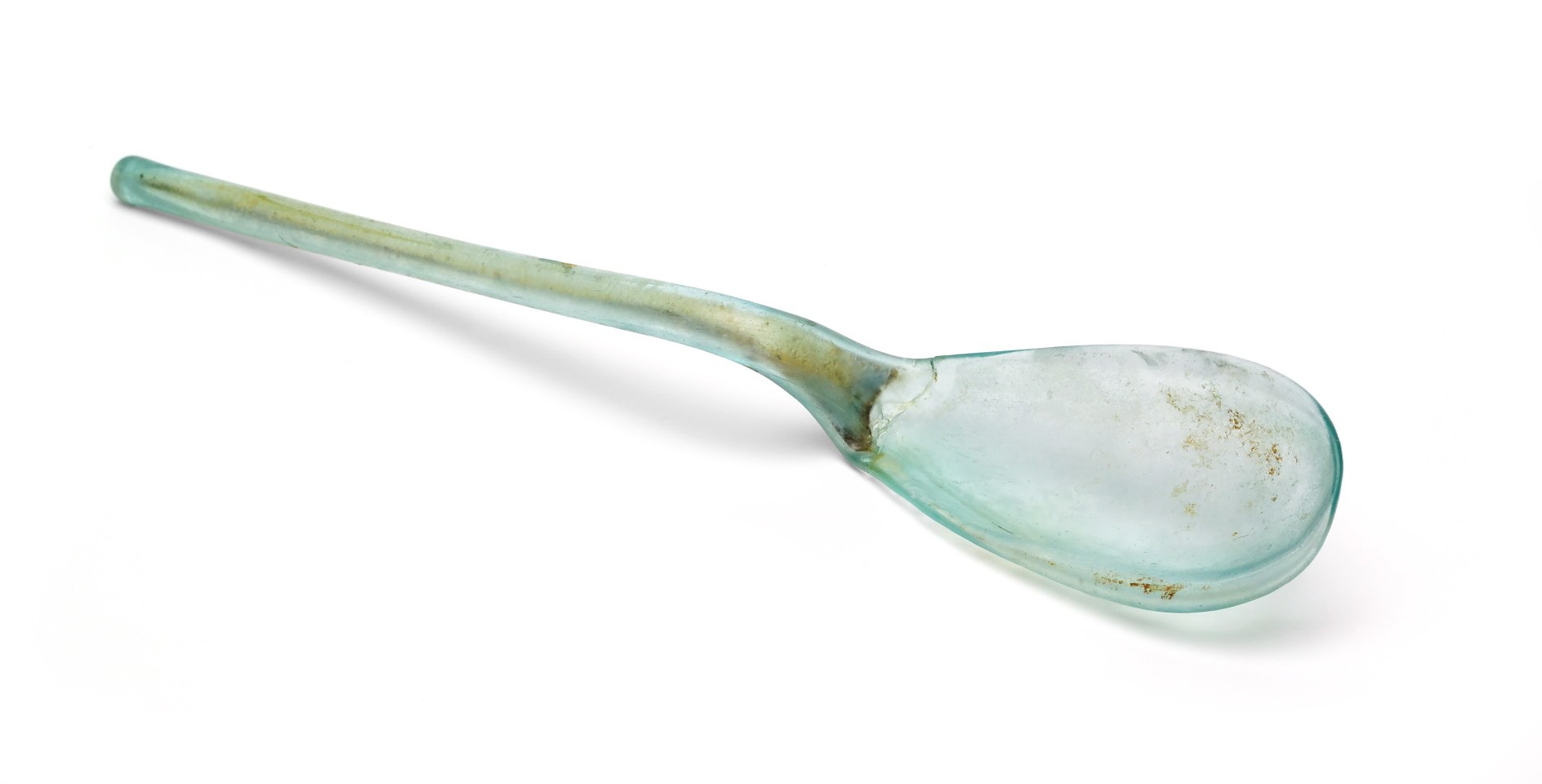In the luxuriously furnished popina dives ("divine"; Mart. 5, 44, 10) or popina ambitiosa ("courting"; "splendid"; Sen. Helv. 10, 3), the guests had the opportunity to enjoy their food on sofas, as in noble houses. The noble setting of this "restaurant" is characterised by the fact that the crockery and cutlery were also made of noble materials, e.g. silver or, as in this case, glass. This spoon is a so-called ligula, which is characterised by an oval spoon.
Since Roman times, table cutlery has increasingly found its way into the households of the noble bourgeoisie in particular. The spoon played the most important role as the most commonly used utensil, while knives were used far less frequently by the participants of a meal. Eating was still done with the fingers. As a result, forks, apart from being part of the serving utensils used for serving and traching food, only became common from the Middle Ages onwards. (AVS)
en

